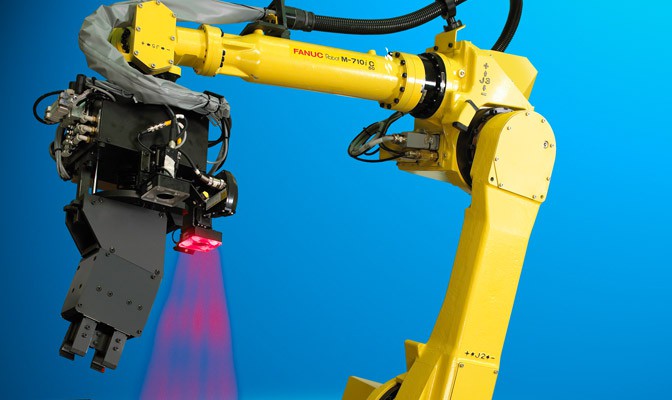Why smart factories rely on fibre testing equipment for success
Discovering the Role of an Optical Fibre Diameter Analyser in Ensuring Product High Quality
The function of an optical fibre diameter analyser is crucial in preserving item quality within the telecommunications industry. These gadgets action fibre diameter with accuracy, ensuring consistency and efficiency. Variations in diameter can bring about substantial signal loss, influencing interaction reliability. As makers aim for quality, understanding the mechanisms behind these analysers ends up being crucial. What innovations lie in advance in this field, and just how will they form the future of optical fibre production?
Understanding Optical Fibre Diameter Dimension
Measuring the diameter of optical fibres is a crucial process in ensuring the efficiency and reliability of fibre optic systems. Accurate measurement is necessary, as variations in diameter can greatly influence signal transmission and total system efficiency. The measurement procedure generally uses innovative devices and strategies, such as laser micrometers or optical fibre diameter analysers, which offer accurate, real-time data.These tools can examine fibres' sizes with severe accuracy, often to micrometre levels. This precision helps identify possible flaws or variances in the production procedure. Additionally, recognizing the diameter measurement includes acknowledging the importance of variables such as temperature level, stress, and product buildings, which can influence the last measurements. By preserving rigorous measurement methods, makers can guarantee that the optical fibres fulfill market standards and specifications, inevitably contributing to the longevity and efficiency of fibre optic networks.
The Importance of Consistency in Optical Fibre Manufacturing
Consistency in optical fibre production is essential for making sure precision in producing processes. Variations in diameter can greatly impact performance metrics, impacting the total top quality and reliability of the fibre. Standardization and high quality control measures are necessary to maintain uniformity and enhance item efficiency.
Precision in Manufacturing Processes

Influence on Efficiency Metrics
Guaranteeing uniformity in optical fibre diameter considerably affects performance metrics throughout various applications. Consistent diameter leads to perfect light transmission, lowering signal loss and enhancing general performance. When fibres maintain a basic size, the probability of problems decreases, boosting dependability in telecommunications and information transfer (optical measurement system). Furthermore, uniform diameters assist in easier integration right into existing systems, minimizing compatibility problems. Variations in diameter can create fluctuations in attenuation and dispersion, adversely impacting performance. By using an optical fibre diameter analyser, producers can very closely monitor and change manufacturing procedures, promoting a greater degree of uniformity. This consistency not just boosts the high quality of the end product however likewise reinforces client fulfillment, showing essential for maintaining competitive benefit in the optical fibre market
Standardization and Quality Control

Exactly How Optical Fibre Diameter Analysers Job
Optical fibre diameter analysers operate with a combination of light transmission and sophisticated more info here measurement methods to precisely analyze the diameter of optical fibres. These tools utilize a laser or LED source of light that emits a light beam routed at the fibre on trial. As light engages with the fibre, it is refracted and spread, enabling accurate measurements.The analyser captures the light utilizing a high-resolution cam or photodetector, which converts the optical signals into electrical signals. Advanced formulas then process these signals, computing the diameter based on the intensity and distribution of the light.The system generally includes calibration features to assure precision, employing well-known standards to confirm dimensions. By constantly monitoring the fibre diameter, these analysers aid maintain compliance with market requirements and requirements, ensuring regular item high quality. Enhanced automation in modern-day analysers additionally simplifies the procedure, assisting in real-time evaluation for makers.
Influence On Signal Integrity and Interaction Dependability
A regular and precise optical fibre diameter is vital for preserving signal honesty and interaction dependability in fibre optic networks. Variations in diameter can cause enhanced light loss, resulting in abject signal top quality and minimized transmission ranges. When fibres are not uniform, concerns such as modal dispersion and depletion might develop, which can misshape the information being transferred and result in mistakes in communication.Furthermore, irregularities in fibre diameter can affect the efficiency of adapters and splicing, resulting in additional signal degradation. This inconsistency can jeopardize the overall integrity of network systems, influencing every little thing from internet speed to telecommunication quality.
Enhancing Manufacturing Efficiency With Advanced Technology
Maintaining uniform fibre diameter is essential for assuring trustworthy interaction systems. Advanced technology, particularly the optical fibre diameter analyser, plays a crucial function in enhancing producing performance. By providing real-time measurements and accurate data relating to fibre diameters, this modern technology allows suppliers to quickly identify variances from needed specs. Subsequently, manufacturing processes can be changed without delay, minimizing waste and lessening downtime.The assimilation of automated systems enhances quality assurance, permitting regular tracking throughout the production procedure. This not only speeds up production yet also enhances general product high quality, leading to less problems. In addition, progressed analytics make it possible for manufacturers to optimize their procedures based upon empirical information, promoting continual enhancement. Consequently, the optical fibre diameter analyser adds significantly to decreasing functional prices and boosting throughput, ultimately promoting an extra one-upmanship on the market. By accepting these improvements, makers can guarantee their items fulfill the highest requirements of quality and dependability.
Future Trends in Optical Fibre High Quality Assurance
As the optical fibre market advances, future fads in quality control will plainly feature advancements in measurement innovation. These developments will make it possible for much more precise evaluations of fibre diameter, boosting total item integrity. Additionally, the combination of automatic quality assurance systems guarantees to enhance procedures and improve consistency in manufacturing.
Advances in Measurement Modern Technology
With the constant development of optical fibre technology, the demand for specific measurement devices is much more vital than ever. Current advancements in measurement modern technology have resulted in the growth of advanced optical fibre diameter analysers that utilize high-resolution imaging and laser-based techniques. These advancements enable manufacturers to attain better precision and repeatability in diameter dimensions, vital for maintaining stringent quality standards. In addition, the integration of synthetic intelligence and machine discovering algorithms improves data analysis, permitting real-time adjustments throughout manufacturing processes. As the market accepts these technological developments, they assure to improve performance, reduce waste, and guarantee the reliability of optical fibres in different applications, eventually supporting the expanding requirement for high-performance communications facilities.

Automated Quality Assurance Systems
While the optical fibre market remains to breakthrough, the execution of automated high quality control systems is positioned to change quality control procedures. These systems use sophisticated algorithms and real-time information analysis to keep an eye on fibre diameter and various other critical criteria with unequaled precision. By incorporating optical fibre diameter analysers with automated systems, manufacturers can find discrepancies from specs instantaneously, reducing the danger of defects. Additionally, automation reduces human error, improves consistency, and increases production timelines. As industries increasingly take on Sector 4.0 concepts, the function of automated quality assurance systems will expand, promoting a smooth link in between manufacturing and quality control. This change not just guarantees greater product quality but additionally fosters development and performance throughout the manufacturing process.
Frequently Asked Questions
What Elements Influence the Optical Fibre Diameter Measurement Accuracy?
Aspects affecting optical fibre diameter measurement precision include ecological problems, calibration of measurement tools, driver method, the level of sensitivity of the determining tool, and the from this source physical buildings of the fibre itself, such as product structure and surface area abnormalities. (robotic vision)
How Typically Should Optical Fibre Diameter Analysers Be Adjusted?
Calibration regularity for optical fibre diameter analysers typically relies on usage intensity and manufacturer referrals. Normal checks, typically regular monthly or quarterly, warranty measurement precision and dependability, consequently maintaining the integrity of the production process.
Can Environmental Issues Influence Dimension Outcomes?
Environmental conditions can significantly affect measurement end results. Factors such as temperature, humidity, and air stress may influence the efficiency of measurement tools, potentially causing errors in the outcomes obtained from optical fibre diameter evaluation.
What Are the Common Kinds of Optical Fibre Diameter Analysers?

Just how Do I Select the Right Analyser for My Production Demands?
Selecting the right analyser involves reviewing production needs, consisting of fibre type, diameter variety, and measurement precision. Furthermore, analyzing the analyser's calibration, compatibility with existing tools, and interface can considerably affect the decision-making procedure.